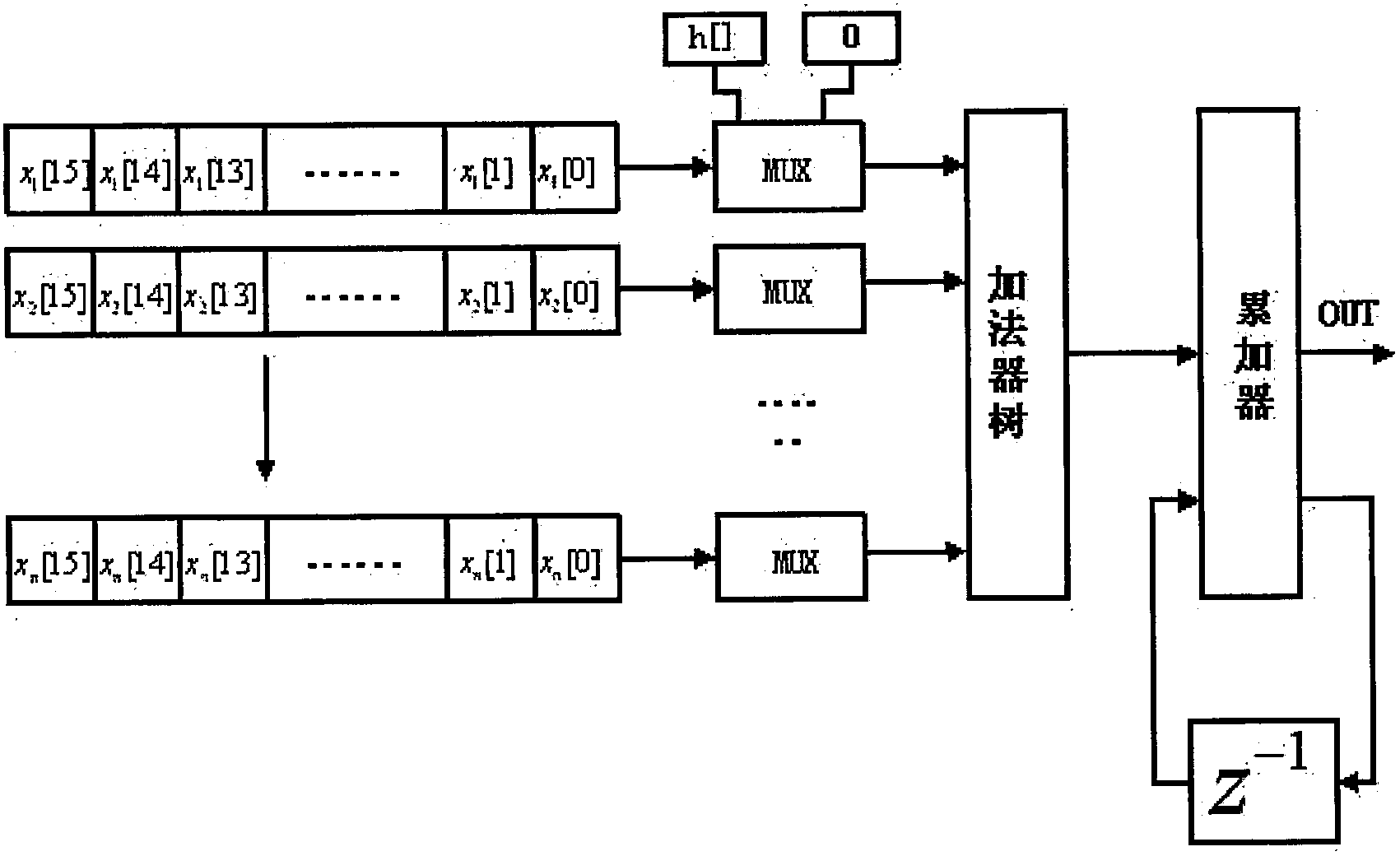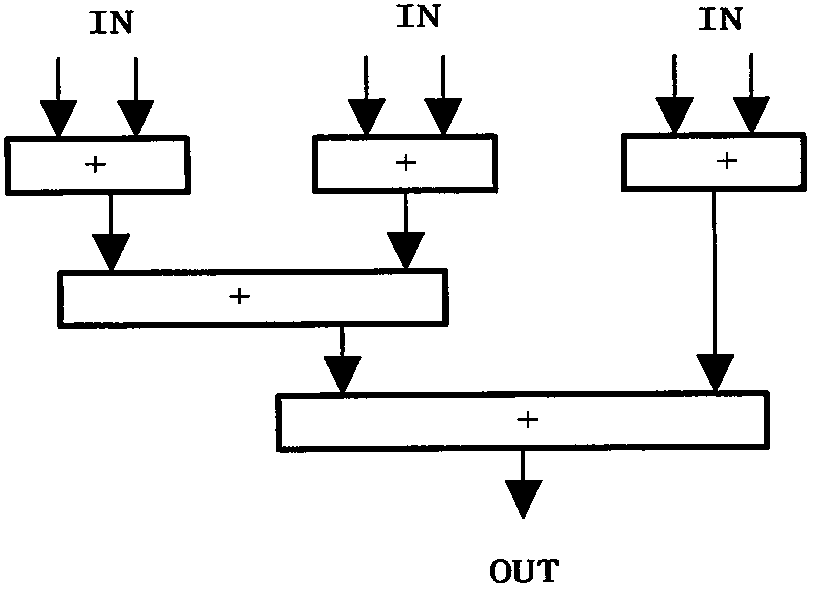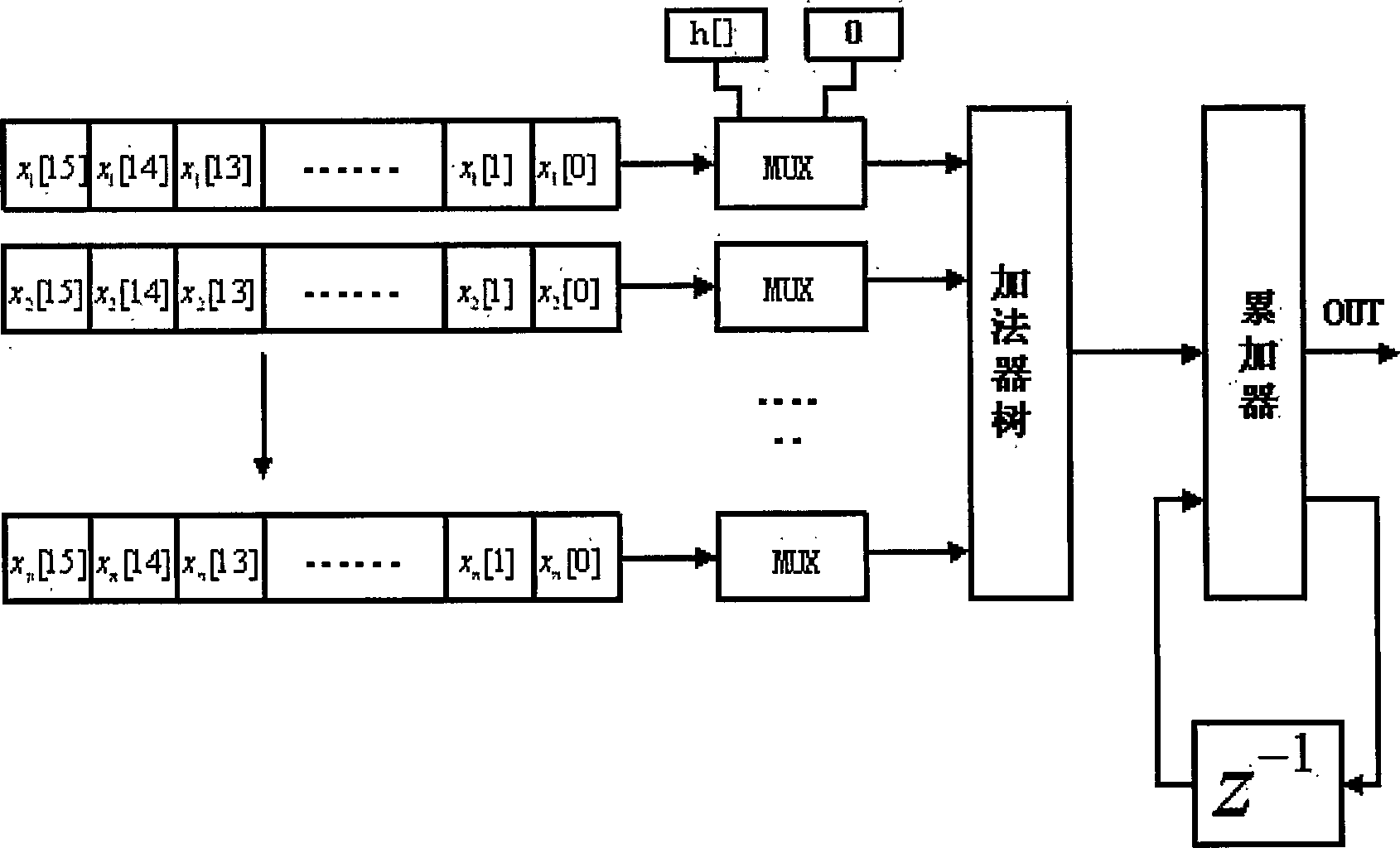Signed multiply-accumulate algorithm method using adder tree structure
An adder tree and multiply-accumulate technology, which is applied to instruments, calculations, and electrical digital data processing, etc., can solve problems such as recalculation, and achieve the effect of small area and convenient expansion
- Summary
- Abstract
- Description
- Claims
- Application Information
AI Technical Summary
Problems solved by technology
Method used
Image
Examples
Embodiment
[0017] When considering the following multiply-accumulate calculation:
[0018] Get N=6, c and x all are the complement code operand of word length 8+1 sign bit. When multiplying the accumulator, the operand D[x] is first sent to the shift register Rx, and the operand c[n] and its {-c[n] 补} is sent to another register. Driven by the synchronous clock, all operands x are shifted to the right at the same time, and the data selection switches M1-M6 select the 6 operands input to the adder tree A1 according to the lowest bit of the R1-R6 shift register. c is still 0, for example: under a certain clock drive, the lowest bits of the six shift registers R1-R6 are [1, 1, 0, 1, 0, 1] respectively, then the six input terminals of the adder tree A1 The operands are {c[1], c[2], 0, c[4], 0, c[6]}. The adder tree A1 outputs the sum of the six operands, which is sent to the accumulator M1 and added to the previously shifted and accumulated value, and stored as a new value. After the ne...
PUM
 Login to View More
Login to View More Abstract
Description
Claims
Application Information
 Login to View More
Login to View More - R&D
- Intellectual Property
- Life Sciences
- Materials
- Tech Scout
- Unparalleled Data Quality
- Higher Quality Content
- 60% Fewer Hallucinations
Browse by: Latest US Patents, China's latest patents, Technical Efficacy Thesaurus, Application Domain, Technology Topic, Popular Technical Reports.
© 2025 PatSnap. All rights reserved.Legal|Privacy policy|Modern Slavery Act Transparency Statement|Sitemap|About US| Contact US: help@patsnap.com



